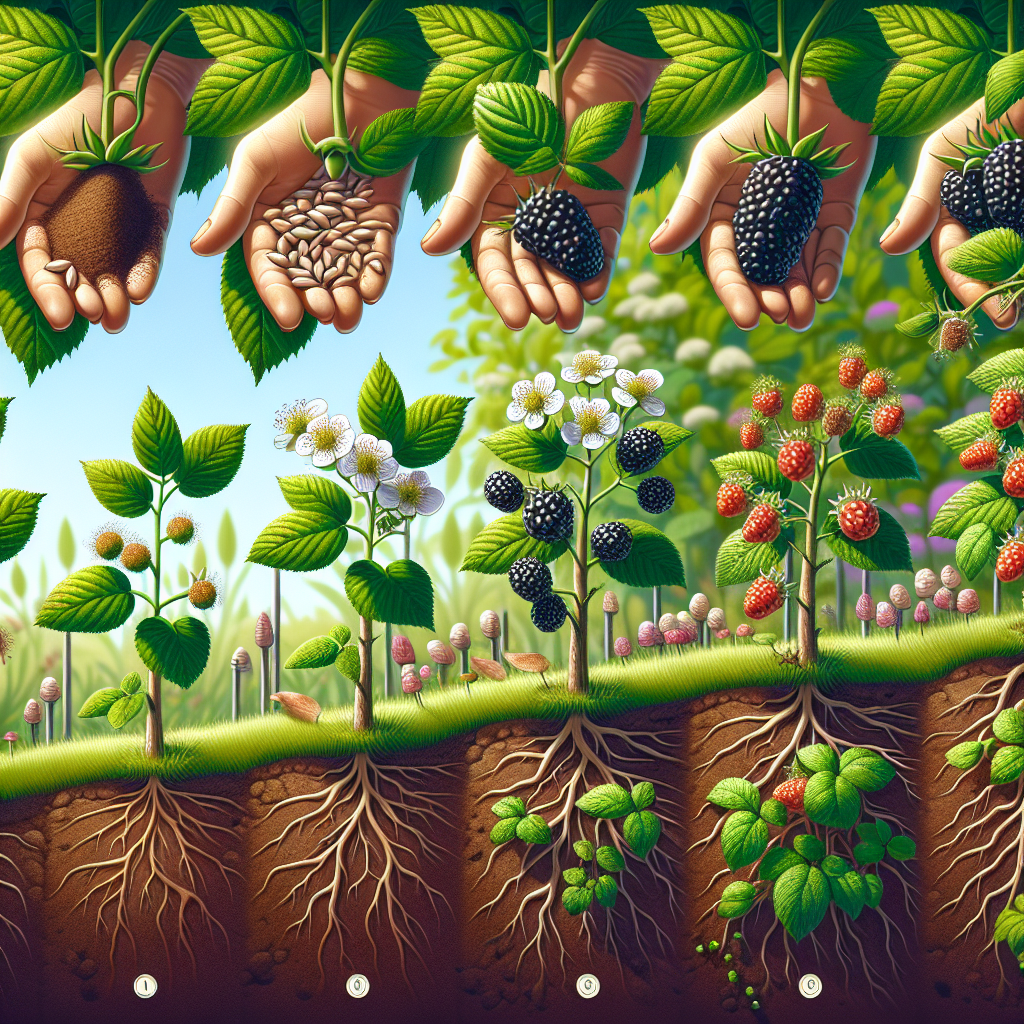
How do blackberries grow
Introduction to Blackberries
Blackberries are a beloved fruit known for their sweet and tangy flavor, enjoyed in a variety of dishes and as a nutritious snack. But have you ever wondered how do blackberries grow? Understanding the life cycle of this delightful berry can provide valuable insights for home gardeners and fruit enthusiasts. In this article, we will explore the growth process of blackberries, from planting to harvesting, as well as tips for successful cultivation.
The Life Cycle of Blackberries
The growth cycle of blackberries is composed of several distinct stages, each critical to the development of the plant.
1. Planting Blackberries
Before you can enjoy fresh blackberries, you must first plant them. The ideal time for planting blackberry bushes is during the early spring or fall. Here’s what you need to consider:
- Location: Choose a sunny spot with well-drained soil.
- Soil Preparation: Amend the soil with organic matter to promote healthy root growth.
- Spacing: Space the plants about 3-4 feet apart to ensure proper air circulation.
2. Root Development
Once planted, blackberry bushes begin to establish their root systems. This is a crucial phase where:
- The roots will spread out to absorb moisture and nutrients.
- Healthy root development is essential for the plant's overall growth and fruit production.
3. Growth of Canes
Blackberries grow on canes, which are the stems of the plant. There are two main types of blackberry growth patterns:
- Primocanes: The first-year growth that will bear fruit in the following season.
- Floricanes: The second-year growth that produces flowers and fruits.
During the growing season, blackberries will thrive with adequate water and sunlight, allowing the canes to reach their full height.
4. Flowering Stage
As the weather warms in late spring to early summer, the blackberry plants will begin to flower. The flowering stage is significant because:
- Pollination occurs, often aided by bees and other insects.
- Flowers will gradually convert into green berries.
5. Berry Development
During the berry development stage, the green fruits will start to swell and change color. The growth of the fruits depends on:
- Consistent watering to maintain hydration.
- Optimal sunlight exposure, which is essential for ripening.
6. Harvesting Blackberries
The final stage in the growth process is harvesting the ripe blackberries. Knowing when to pick is crucial:
- Blackberries should be harvested when they are fully black, plump, and easily pull off the bush.
- Ripe berries can be stored in the refrigerator for a few days, or frozen for longer preservation.
Tips for Growing Blackberries Successfully
If you’re eager to cultivate blackberries in your home garden, here are some best practices to ensure a fruitful yield:
1. Choose the Right Variety
Different varieties of blackberries have different growth requirements and flavor profiles. Some popular options include:
- Thornless blackberries: Easier to handle and harvest.
- Boysenberries: A hybrid that is sweeter and larger.
2. Soil and Watering Needs
Blackberries prefer a slightly acidic to neutral pH level in the soil. Ensure proper watering by:
- Watering deeply at the roots rather than shallowly.
- Using mulch to help retain moisture and suppress weeds.
3. Sunlight Requirements
Blackberry plants thrive in areas that receive at least 6-8 hours of full sun daily. Ensure they are not shaded by larger plants or structures.
4. Pruning Techniques
Regular pruning is essential for healthy growth and fruit production. Consider these tips:
- Prune floricanes after harvesting to encourage new growth.
- Thin out spent canes to allow better air circulation.
Common Challenges in Blackberry Cultivation
While growing blackberries can be rewarding, it’s not without its challenges. Here are some common issues that gardeners may face:
1. Pests and Diseases
Blackberry plants may attract several pests, such as:
- Spider mites: Cause leaf damage and reduced vigor.
- Fruit flies: Lay eggs in ripening fruit.
To manage pests, consider using organic pest control methods and regular inspection of your plants.
2. Thorns and Bruising
The presence of thorns can make harvesting challenging. To minimize bruising during harvesting:
- Wear gloves and use baskets while picking.
- Harvest in dry conditions when the berries are less fragile.
3. Environmental Factors
Frost can damage blossoms and young fruits. To protect your plants:
- Use row covers to shield plants during late frosts.
- Choose frost-resistant varieties suited for your region.
Conclusion
Understanding how do blackberries grow not only enriches your gardening knowledge but also enhances your appreciation for this delicious fruit. With the right care, selecting the proper variety, and managing common challenges, you can successfully grow your own blackberries right in your backyard. Enjoy the satisfaction of harvesting your own sweet berries, and savor the joy they bring to your meals and snacks.
Additional Resources
For those interested in diving deeper into blackberry cultivation, consider the following resources:
- Cooperative Extension Service on Blackberry Production
- North Dakota State University's Blackberry Growing Guide
- University of Vermont Extension: Blackberries
By Guest, Published on October 23rd, 2024